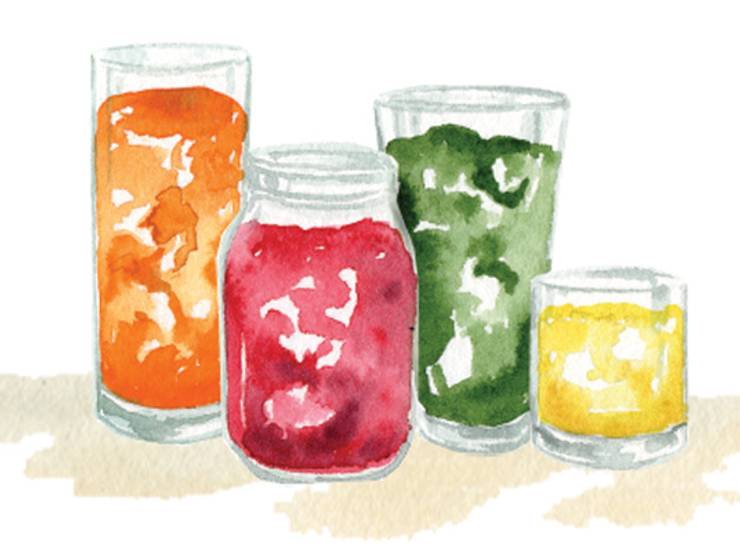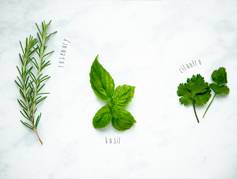Articles
Everything You Need to Know About Pulp
Leftovers. Mush. Pulp. Whatever you want to call it, you may have questions about what to do with the extra colorful fibers that come out of your juicer. The first lesson about pulp: it has tons of benefits, so don’t toss it just yet.
Let’s talk more about what it is and all the ways you can use it.
All About Pulp and Fiber
When you add vegetables and fruit to a juicer, you typically get juice on one side and pulp on the other. Most of us drink that juice, and toss the pulp. But next time, you might want to hold on to that fibrous gold.
“The pulp itself contains insoluble fiber, which is the fibrous parts of fruits and vegetables, while juice contains only soluble fiber,” says Kristen DeAngelis, a functional dietitian and health coach. “When you have some pulp leftover, it’s contributing to your overall fiber intake, in addition to adding a little bulk for some blood-sugar balancing benefits.”
It’s important to know that two types of fiber exist, soluble and insoluble, and that both forms are essential for overall health, digestion and helping to prevent disease.1

THE TWO TYPES OF FIBER:
The soluble fiber, found in juice, is found in nuts, seeds, beans, whole grains and certain fruits and vegetables. It helps to slow digestion. This type of fiber is still present in juice, thanks to the produce from your recipe.
The insoluble fiber, found in pulp, is what mostly gets removed from vegetables and fruit during the juicing process. This type of fiber adds bulk to the stool and helps you feel fuller for longer.
“I like to think of insoluble fiber as a mop that sweeps up and helps carry out the ‘trash,’” DeAngelis says. “Soluble fiber is more easily accessed and broken down in the intestines into usable metabolites and can regulate the gut microbiota by producing beneficial short chain fatty acids, and some forms may even offer prebiotic/probiotic benefits.”
Research shows that while most people believe they consume enough fiber, the truth is that only about 5 percent of the U.S. population meets the recommended daily amount.2 Fiber intake recommendations from the Institute of Medicine range from about 20 grams to 38 grams per day, depending on your gender and age.3
Many misperceptions about fiber persist, including that all whole-grain foods are good sources of fiber and that fiber-rich foods are expensive or hard to prepare. One way to know how much fiber you are getting each day is to check nutrition labels.
HIGH-FIBER FRUITS INCLUDE4:
| Fruits | Serving Size | Total Fiber (grams) |
|---|---|---|
| Apple, with skin | 1 medium | 4.5 |
| Orange | 1 medium | 3 |
| Pear | 1 medium | 5.5 |
| Raspberries | 1 cup | 8 |
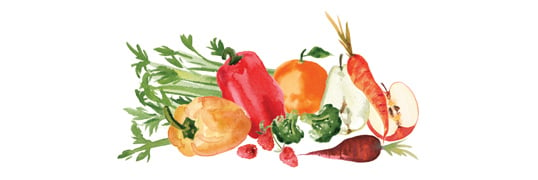
HIGH-FIBER VEGETABLES INCLUDE5:
| Vegetables | Serving Size | Total Fiber (grams) |
|---|---|---|
| Bell Pepper | 1 medium | 2 |
| Broccoli | 1 medium stalk | 3 |
| Carrot | 1 medium | 2 |
| Celery | 2 medium stalks | 2 |
Pulp Preferences
Different juicers create different types of pulp. For example, a very efficient juicer will create drier pulp which means that most of the juice, including all its enzymes and nutrients, have been squeezed out for you to enjoy.
If your pulp is wet or heavy then the juicer is less proficient. You can always re-juice this kind of pulp by running it through the juicer a second time.
You may also notice that some juicers retain a small amount of pulp in the juice. Again, this is not a problem, just a personal preference. If your juicer retains a little bit of pulp, that means your juice will have a little bit of extra insoluble fiber—and that’s something the body needs, too. You can keep it in the juice or use a fine mesh or tea strainer to strain it out.
From a health perspective, it’s okay for almost everyone to have a little bit of pulp in your juice. In fact, some people may want to mix a little back in, especially if you are looking to add extra insoluble fiber to your diet. Talk with a healthcare professional or nutrition expert to get clear about how much fiber and what kinds of fiber are right for your specific needs.
If you don’t love the taste of a juice pulp, you can try adding a few ice cubes to make it a little more palatable. The ice cubes can help make the pulp feel less prominent in the juice. Experiment and see what you like best and how your body responds.
Those who may want to avoid pulp altogether are those with digestive concerns or IBS and are following a short-term low-fodmap diet, DeAngelis says. In particular, these folks will want to avoid the pulp of apples, pears, cherries, mangoes and watermelon the juice is fine).
“For individuals undergoing certain types of surgery or for those having a difficult time with digestion reducing the amount of total fiber may be recommended,” she says. “For those who have an acute flare of diverticulitis, it is often recommended to consume a low-fiber diet. However, it’s important to remember that a diet high in fiber will actually serve to prevent having an episode of diverticulitis in the first place.”

How Can You Utilize Pulp?
Using pulp just after juicing is the freshest option, but if you are juicing in the morning and need to get out the door, you can easily add pulp to a sealed bag or container with a lid and store it in your fridge for a few days.
You can also freeze pulp for future use, as well. One of the easiest ways is to make pulp cubes by adding your pulp to an empty ice cube tray and freezing it. These are great to add to smoothies.
If you’re not a fan of reusing your juice pulp in a meal, you can always compost it. Learn more about how to start composting here.
Once you’ve figured out your storage options for pulp, you are ready to add it to a variety of dishes. Consider if you have pulp leftover from a veggie- or fruit-based juice.
Green vegetable pulp can easily be mixed into homemade guacamole or other veggie dips for an extra fiber boost. Other uses for vegetable-heavy pulp are burgers and meatballs, pasta sauce, salad dressing, chili, stir-fry, enchiladas and even as an extra layer in lasagna. You can also use it to make this Veggie Pulp Broth.
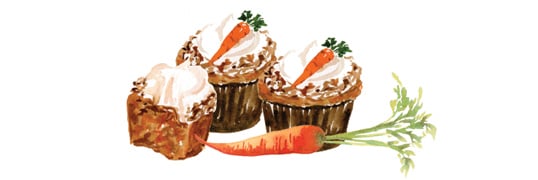
Sweeter, fruit-based pulp goes great in yogurt, cakes, muffins, pancakes and more. Check out this recipe for Carrot Pulp Cupcakes. You can also try making your own pulp ice cream by blending frozen bananas with about half a cup of leftover fruit juice pulp or make your own sorbet like this Cherry Mango Sorbet.
“My favorite way to enjoy leftover juice pulp is to add it to pancakes—carrot, sweet potato, and apple pulp work best for this,” DeAngelis says. “The easiest, and most common way I use my pulp however is to add it to my morning smoothie the next day.”
She shared that the most fun way she’s utilized her pulp was to share it with others.
“I used to barter with my neighbor as her chickens loved the juice pulp, and I always received a fresh batch of organic pasture-raised eggs,” she says.
Speaking of animals, try adding a spoonful of pulp to pet food. Yes, it’s a great way to add extra nutrition and roughage to their diets, just be sure to review what fruits and vegetables are safe for dogs and cats.6 7
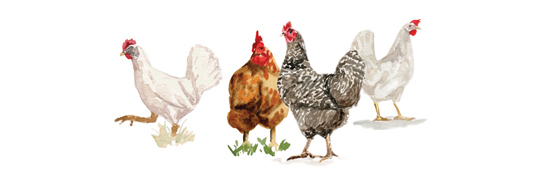
Our Favorite Produce Available in August
Here’s our guide to some of the best seasonal fruits and veggies to enjoy this month that can help support your goals and boost your juice. Remember: seasonal foods will be a little different depending on where you live, soil conditions and weather.
BEST VEGGIES AND HERBS IN SEASON RIGHT NOW
BELL PEPPERS
Botanically, bell peppers are considered fruits because they grow from a blossom, but we generally classify them as vegetables for cooking and eating. Unlike other types of peppers, they are typically sweet and mild rather than spicy. These crunchy peppers are rich in vitamin C.8

• Shopping Tip: Look for peppers with smooth and shiny skin. If peppers feel firm, that’s a sign they are ripe and ready to eat.
• Varieties: See colors like green, yellow, red, orange and purple. Red peppers are the sweetest and green peppers can be stored the longest.
• Storage Tip: You can keep bell peppers on the countertop for a day, if you plan to use them quickly. Otherwise, dry peppers and store them in a produce bag in the crisper drawer.
CHARD
This dark leafy green is popular in Mediterranean cuisine. Like many greens, it turns bitter when the temperature gets too hot, so you will see it at markets in late summer and early fall. Swiss chard provides an array of nutrients and minerals like potassium, as well as vitamins A and K.9
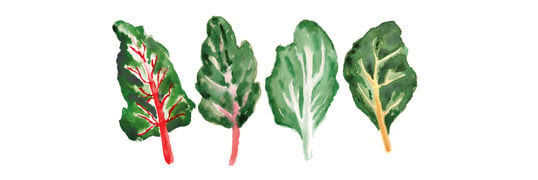
• Shopping Tip: Look for chard that has deep green leaves and healthy stalks without bruises. The smaller leaves will be more tender with a more mild flavor.
• Varieties: Chard comes in a variety of colors including green, red and golden.
• Storage Tip: Wrap the stalks of the chard in a slightly damp paper towel or cloth, and then store them in the crisper drawer in your fridge.
TOMATOES
Nothing says late summer like an abundance of juicy, ripe tomatoes. The tomato plant is originally from the South American Andes region but is now grown throughout the world. Tomatoes are a great source of vitamins A and C.10

• Shopping Tip: Look for a tomato with vibrant color, smells sweet and feels firm but not too hard.
• Varieties: So many great varieties exist! Large juicy heirloom varieties are great for slicing. Small, cherry and grape varieties can be deliciously sweet. Drier hybrid types like Roma or Early Girl can make a delicious homemade tomato sauce.
• Storage Tip: Never refrigerate tomatoes (as they will lose their flavor) and don’t stack them. Instead, find a wide bowl and let them sit next to one another.
BEST FRUITS IN SEASON RIGHT NOW
CHERRIES
A bowl of bright red cherries is iconic in the summer. Not only are cherries delicious, but they also offer some powerful nutritional benefits. Cherries contain anthocyanins, which are antioxidants that help reduce inflammation and possess anti-cancer benefits.11 Drinking tart cherry juice concentrate can also improve sleep duration and quality, according to this study.12

• Shopping Tip: You can pick a ripe cherry by looking at its stem and skin. A green unbroken stem is a good sign; avoid any cherries with brown or brittle stems. The skin itself should be shiny and plump, free of wrinkles or dents.
• Varieties: Both sweet and tart cherries are delicious on their own or paired with other foods.
• Storage Tip: Unlike many other summer fruits, cherries lose their flavor at room temperature. Once you get them home from the market or store, get them in your fridge. Wait to wash them until right before you eat them. If you’re juicing them, always remove the pits to avoid creating any issues in the juicer.
MANGOES
This tropical fruit thrives in warm climates. About 75 percent of the world’s mangoes are grown in India, but in the U.S., they are grown in Florida, California, Hawaii and Puerto Rico. Mango season runs from May to September, so August is a great month to enjoy them. These fruits are a significant source of vitamins A and C, folate, fiber and potassium.13
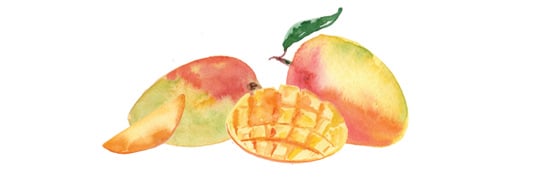
• Shopping Tip: When looking for a fresh, ripe mango, check the stem area and see if you can smell a sweet aroma. You can also pick it up and give it a gentle squeeze it. If the mango gives a little, it’s good to go.
• Varieties: The most common varieties are Timmy Atkins, Haden, Keitt and Kent.
• How to Cut: Check out this quick video for tips on cutting a mango.
AUGUST HIGHLIGHTS
5 INGREDIENTS TO JUICE RIGHT NOW
- Bell Pepper: adds color and boost of vitamin C to juices
- Chard: helps hydrate thanks to high levels of potassium
- Tomato: make your own savory juice or gazpacho
- Cherries: enhance your juice with a sweet or tart variety
- Mango: tastes like a sweet tropical peach and full of nutrients
COMMUNITY MEMBER SPOTLIGHT
JUICING TIPS FROM EVA MOLENDA @splashofgoodness
1. What are your favorite juicing tips?
If you're interested in starting a juicing habit, there are a few things you can do to make the process as smooth and enjoyable as possible. One of the best ways to make juicing a breeze is to wash your produce the night before. That way, all you have to do in the morning is add your ingredients to the juicer and enjoy.
Another great tip is to batch juice for a couple of days. This way you can always have fresh juice on hand and you won't have to worry about juicing every day. Plus, it's a great way to stay consistent with your juicing habit, which helps you stay healthy and energized.
And last but not least, have fun juicing! Start with one or two ingredients and keep it simple. There's no need to complicate your juices, especially if you're a beginner. Just enjoy the process and let the juicer do its job.
2. What is your favorite way to repurpose juice pulp?
If you're a juicer, chances are you've been throwing away the pulp without giving it a second thought. But juicing pulp is actually packed with nutrients and can be used in a variety of ways.
Here are just a few juicing tips to help you make the most of your juicing pulp:
- Add juicing pulp to soups, stews, broths, and sauces for added texture and nutrition.
- Use the juicing pulp to make veggie burgers, veggie balls, or other vegetarian dishes.
- Incorporate juicing pulp into smoothies, yogurt bowls, desserts or oatmeal for a fiber-rich breakfast.
- Make juicing pulp crackers by mixing them with spices and herbs, then bake until crispy.
- Use juicing pulp as compost or fertilizer in the garden.
- If you have pets, juicing pulp is a great way to sneak some extra nutrition into their diet as well.
sources:
- https://medlineplus.gov/ency/article/002136.htm
- https://www.ncbi.nlm.nih.gov/pmc/articles/PMC6124841
- https://dietaryfiber.org/institute-medicine-iom
- https://www.mayoclinic.org/healthy-lifestyle/nutrition-and-healthy-eating/in-depth/high-fiber-foods/art-20050948
- https://www.fda.gov/food/food-labeling-nutrition/nutrition-information-raw-vegetables
- https://www.akc.org/expert-advice/nutrition/fruits-vegetables-dogs-can-and-cant-eat/
- https://www.petmd.com/cat/which-fruits-can-cats-ea
- https://www.webmd.com/diet/health-benefits-bell-peppers#2
- https://www.medicalnewstoday.com/articles/284103
- https://fdc.nal.usda.gov/fdc-app.html#/food-details/566543/nutrients
- https://www.ncbi.nlm.nih.gov/pmc/articles/PMC7504512
- https://pubmed.ncbi.nlm.nih.gov/22038497
- https://fdc.nal.usda.gov/fdc-app.html#/food-details/169910/nutrients
- Choosing a selection results in a full page refresh.
- Press the space key then arrow keys to make a selection.
